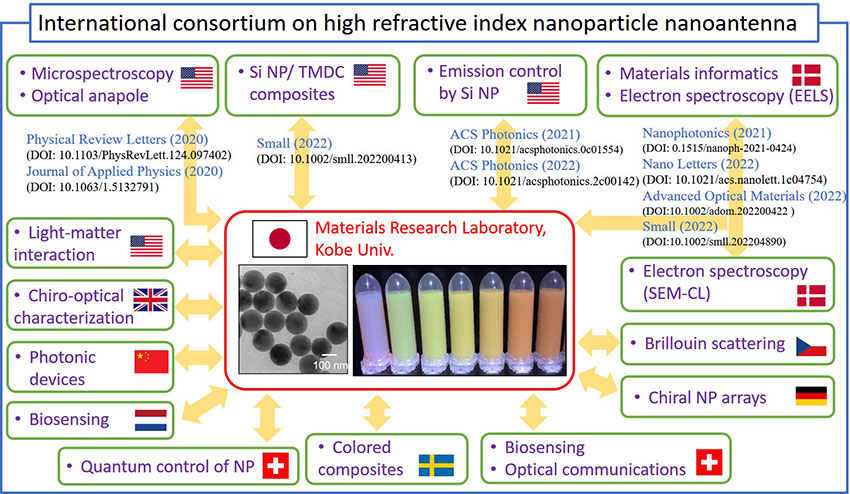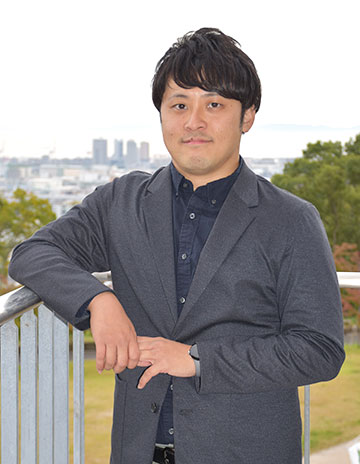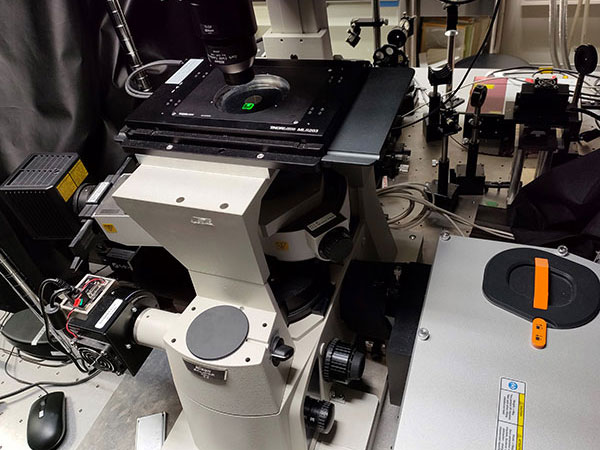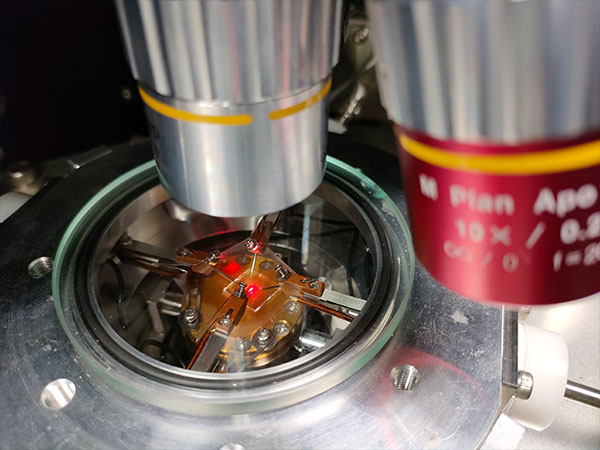Project Description
Nanophotonics is a rapidly growing research field that enables light to be completely controlled using structures far smaller than the wavelength of light. Resonant confinement of light fields into a subwavelength scale region makes it possible to implement novel optical devices with functions that cannot be achieved with diffractive optics. Traditionally, the main constituents of nanophotonics devices were metallic (or “plasmonic”) nanostructures. Recently, a new trend that focuses on high-refractive-index dielectric nanostructures that have Mie resonances has emerged in the nanophotonics society, and has been expanding very rapidly in the United States, Europe, Australia and China. This new emerging academic field is now called ‘Mie-tronics’.
In 2022, the international project ‘Establishment of an international consortium on high refractive index nanoparticle nanoantenna’ was started. The project was awarded a Kobe University Strategic International Collaborative Research Grant (Type B: Fostering Joint Research). The aim of this project is to establish an international collaboration network in one specific sub-field of ‘Mie-tronics’. The collaboration network’s main focus is on a solution of perfectly-spherical crystalline-silicon nanoparticles developed by our group (as shown below in the two photos in the center of the international consortium diagram; on the left is a transmission electron microscope image of silicon nanospheres and on the right is a photo of the solutions).
The beauty of the nanosphere is that it is a highly-symmetric simple structure encompassing very rich physics that have been overlooked for decades. Although the optical response of a nanosphere was analytically calculated more than 100 years ago by Gustav Mie, detailed experimental studies have only started recently due to a lack of suitable materials. The successful production of the very high-quality Mie resonators not only enables fundamental research to be conducted, but also accelerates the development of its applications in optoelectronics, photochemistry, biochemistry, biomedical fields and the coloring material industry. Therefore, we aim to establish an extensive international collaboration network of researchers with different expertise so that research can be conducted across such broad fields. We expect that various new ideas will mingle through the network, culminating in notable and unexpected outcomes.

Comments from the Project Leader
Professor SUGIMOTO Hiroshi (Associate Professor of the Graduate School of Engineering)

Our research group has been developing silicon-based nanostructures, plasmonic nanostructures and metal-dielectric composite nanostructures, and exploring their applications in electronics, photonics, photochemistry, biophotonics, and other fields. We also have a series of experimental facilities for material development and for characterizations of optical and electrical properties (see the two photos in this column). A distinctive feature of our group is that we combine physical, chemical and biological processes to develop novel nanomaterials. To achieve our goal, we have been collaborating with researchers around the world on the development of novel nanomaterials, the development of new characterization methods, and the development of applications for these nanomaterials. These collaborations often involve the short to long term mutual exchange of young researchers. We are always open to exchanging materials, ideas and researchers.


International Collaboration
Whether domestic or international, collaboration between researchers with different specializations is indispensable to modern science. Such collaborations are arguably the largest driving force in the development of new interdisciplinary research fields. For Japan, international collaboration is naturally more important than domestic collaboration considering the comparatively small number of Japanese researchers in the world. In this context, we have developed multiple international collaborations and published joint papers with over 20 research groups in 16 countries including the USA, the UK, Germany, the Netherlands, Denmark, Sweden, the Czech Republic, Poland, Hungary, Slovakia, Israel, Russia, Morocco, Australia, India and China. These groups consist of theoretical physicists, experimental physicists, material scientists, chemists, biochemists, electronic device engineers and other diverse experts. The topics of collaborative research projects have always been related to nanomaterials and nanophotonics, although the specific content has changed over time.
We started to research silicon nanoantennas in the field of ‘Mie-tronics’ in 2017. To study the fundamental properties and explore possible applications for the colloidal silicon nanoparticles developed by our group, we explore the novel light matter interactions in Mie resonant silicon nanoparticles using sophisticated measurement techniques (such as optical microscopy with cylindrical vector beam excitations1,2 and advanced electron microscopy and spectroscopy3–5). Through these collaborations, we have successfully discovered novel optical phenomena and have proposed optical functionalities6–8 that cannot be achieved by nanoantennas at present. In addition, we are developing new nanoantenna materials through data-driven material exploration9. We have also used biomolecules and biotemplates to assemble nanoantenna structures for novel integrated photonic devices. Furthermore, we have developed a new material platform that combines this technology with naturally-derived functional materials, which could help achieve the SDGs. Over the next 3 years, we will use the award grant to expand existing collaborations in the consortium.
- 1J.A. Parker, et al., Phys. Rev. Lett. 124, 097402 (2020).
- 2U. Manna, et al., J. Appl. Phys. 127, 033101 (2020).
- 3A. Assadillayev, et al., ACS Photonics 8, 1582 (2021).
- 4A. Assadillayev, et al., Nanophotonics 10, 4161 (2021).
- 5S. Fiedler, et al., Nano Lett. 22, 2320 (2022).
- 6T. Hinamoto, et al., Small 18, 2200413 (2022).
- 7H. Shinomiya, et al., ACS Photonics 9, 1741 (2022).
- 8H. Sugimoto, et al., Small 18, 2204890 (2022).
- 9M.K. Svendsen, et al., Adv. Opt. Mater. 10, 2200422 (2022).
Information on related research facilities





